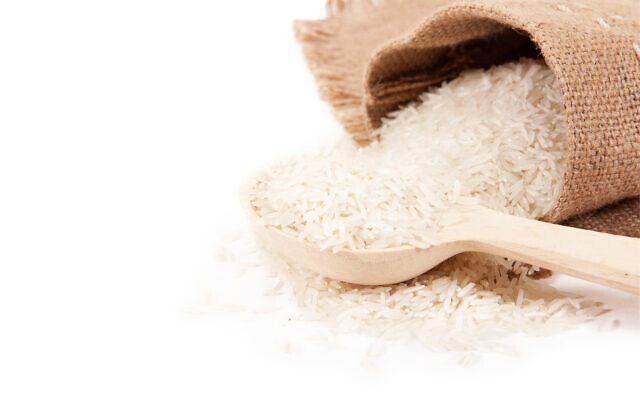A Sephazi Ashkefardi seder
Rice, legumes, peas, lentils … there are always questions around who can eat what over Pesach. But what other differences are there between Ashkenazi Jews and those who are of Sephardi or Mizrahi heritage?
In the days leading up to our wedding, my husband asked the rabbi whether he could eat rice on Pesach. He was, after all, marrying a Sephardi.
To this day, I’m still not sure whether my husband was joking or not. The rabbi certainly wasn’t when he laughed and answered no.
Regardless though, in my humble opinion, we do have a much tastier Pesach diet. My family come from Baghdad so our custom is to eat rice during Pesach. Of course, Sephardi and Mizrahi Jews whose heritage lies in other African and Middle Eastern nations will have different dietary requirements for Pesach.
And just like our diets, our kiddush cups and our prayers, our Pesach seders are also different.
When I was young, I learnt Ma Nishtanah through school. Hilariously, until I was in my twenties, I was the youngest around the seder table when we would celebrate with my father’s side, so I continued to ask the four questions until the babies were old enough to take over.
But I never really said it when we did our Sephardi seder with my mum’s side. When we got to that spot in the Haggadah, someone would sing it in Hebrew and then it would be sung in Arabic as well.
In fact, a lot of our seder is said in Arabic. I have fond memories of my great-grandmother singing in Arabic right until I was in my teens. I never really understood what she was saying, but I sure loved to listen to it.
While my son is now singing the Ma Nishtanah proudly alongside his cousins, along with all the other Pesach songs he’s learning at school, (and of course, we still hide the afikomen and watch the craziness as the kids scramble to find it,) he has very quickly realised that things are different between his Ashkenazi seder and his Sephardi one – daddy’s side and mummy’s side respectively.
Just the other day he started talking about the differences in our seder nights, like, for instance how we do the plagues and when we eat our egg.
We also have different foods on our seder plates. When Ashkenazis have parsley and potatoes, among other vegetables, for karpas, my family does celery.
For salt water, we substitute lemon juice – and then someone around the table usually drinks it (it used to be my mum, now my son loves it).
While Ashkenazis usually make their charoset from apple, nuts and wine or honey, my family has halek – deliciously sweet date syrup with crushed walnuts.
For the maror, there’s usually horseradish on the Ashkenazi plate, but we have lettuce. And my golly gosh, if you’ve never had it, the combination of halek, lettuce and matzah makes for a delectable Hillel sandwich.
By far, the highlight for the kids though, is the plagues. Rather than dipping our pinkies in our wine and stamping our serviettes, we pour each plague into a cup. Once the plagues have been said in Hebrew and Arabic – the Arabic always makes the kids giggle – the kids go outside and pour the plagues down the drain. It’s like a little mid-seder excursion for them. For the really spiteful, there’s also the temptation to pour the plague-infested wine down the drain in front of an unlikeable neighbour.
I mentioned to my son’s schoolteacher that he is half Sephardi and she said how exciting it would be to explain to the children the differences in our seder tables, and then for my son to experience it first-hand with our families. I love that they are being taught the different ways to be Jewish, because no family is the same, and we all need to understand the differences in our heritage.
This year, for our second night seder, my children will have four generations of my family sitting with them, singing in Hebrew, Arabic and English, from their 89-year-old great-great-aunt to their five-month-old baby cousin.
As for the rice debate, my husband’s argument is that as I am the primary chef in our house, he should be respectful of what I cook, even if that’s rice. I’m not sure that argument really flies, especially given the fact that in my house, it’s a 50/50 split when it comes to kitchen duties.
Regardless of our diets during Pesach, our children are growing up in a home that embraces both Ashkenazi and Sephardi customs, and that stretches to our seder tables – and how beautiful is that?


comments